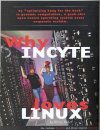Back about 25 years ago (!), I had a Radio Shack crystal radio under my bed, and I would listen to CKOC from Hamilton well into the night hours with the radio’s little earphone strung up under my pillow. One of the songs I remember ever so clearly from those days is Right Before Your Eyes by Ian Thomas. If you hear the song, you’ll remember it: it starts Every day I sit beside on the bus to Madison Avenue; You work in the Big Grey Store with the Revolving Doors.
![]() Ever since, I’ve been trying to find a copy of the song. And trying. And trying. It turns out that the reason I couldn’t find it was that there are actually two versions of the song, one in 1976 by Ian Thomas, who wrote it, and one by the band America, which had a big hit with it in the U.S. in 1982. I was always looking for an album by America with Ian Thomas… which doesn’t exist. The Ian Thomas version is more interesting; the America version is better produced.
Ever since, I’ve been trying to find a copy of the song. And trying. And trying. It turns out that the reason I couldn’t find it was that there are actually two versions of the song, one in 1976 by Ian Thomas, who wrote it, and one by the band America, which had a big hit with it in the U.S. in 1982. I was always looking for an album by America with Ian Thomas… which doesn’t exist. The Ian Thomas version is more interesting; the America version is better produced.
![]()
Ian Thomas is brother of actor Dave Thomas, of SCTV fame. Ian actually starred in a 1981 episode of SCTV, and he wrote music for Dave’s 1993 film Ghost Mom
So I’ve read the books, watched the movies, seen the documentary videos. Now I close the book on my McCourt obsession with The Brothers McCourt, which aired Friday, November 3, 2000 on CBC Prince Edward Island.
I received an up to date report on all of the domain names I’ve registered with Network Solutions over the years (my first one was digitalisland.com exactly 6 years ago today). In total, I’ve paid them $4015 for domain name registrations. I think it might be time to buy stock in Network Solutions.
 My friend Oliver Baker has written an interesting article on the use of Linux at Incyte Genomics, a California biotechnology company. Oliver’s website also holds links to other interesting reads on everything from Dolly the Sheep, to Transmembrane movement of the shaker K+ channel S4. (Hint: start with Dolly).
My friend Oliver Baker has written an interesting article on the use of Linux at Incyte Genomics, a California biotechnology company. Oliver’s website also holds links to other interesting reads on everything from Dolly the Sheep, to Transmembrane movement of the shaker K+ channel S4. (Hint: start with Dolly).
 This week saw the return of Robert Downey Jr. to the screen, and of Brian Tobin to federal politics. On Monday, I just happened to watch Downey on Ally McBeal,
This week saw the return of Robert Downey Jr. to the screen, and of Brian Tobin to federal politics. On Monday, I just happened to watch Downey on Ally McBeal,  immediately followed by Tobin on The National, and I was struck with how similar they are as characters: they both exude enthusiasm; they both make the other people in the room look better by their presence, filling up the room with their charisma. Forgetting the election (Tobin) and the drugs (Downey), they are both fantastic, electric people.
immediately followed by Tobin on The National, and I was struck with how similar they are as characters: they both exude enthusiasm; they both make the other people in the room look better by their presence, filling up the room with their charisma. Forgetting the election (Tobin) and the drugs (Downey), they are both fantastic, electric people.
 When you only have two television channels (CBC and CTV), sometimes you have to watch Arthur. So Oliver and I sometimes watch Arthur. This got me wondering: what species is Arthur, anyway? It turns out that he’s an aardvark! This seems very odd to me, especially as Arthur has a dog, which you would think would be strange thing for an aardvark to have. But I suppose it’s no weirder a fact than that Arthur (the aardvark) can talk and walk and go to school. Hmmmmm.
When you only have two television channels (CBC and CTV), sometimes you have to watch Arthur. So Oliver and I sometimes watch Arthur. This got me wondering: what species is Arthur, anyway? It turns out that he’s an aardvark! This seems very odd to me, especially as Arthur has a dog, which you would think would be strange thing for an aardvark to have. But I suppose it’s no weirder a fact than that Arthur (the aardvark) can talk and walk and go to school. Hmmmmm.
The Red Cross and Red Crescent Movement is considering a proposal to adopt a red diamond as a new culturally-neutral symbol. While I realize that there are perhaps valid cultural reasons for this, it seems a little bit like Coca-Cola changing their name to Bloxni-Bloxnor.
A couple of weeks ago I thought I’d do something uncharacteristic and try and lead the technology curve: I upgraded my Windows 98 machine to Windows ME. This was a mistake. Although Windows ME initially looked slick and faster, I soon started to notice problems: applications like Corel Xara wouldn’t load unless I started them right after a reboot; I found myself having to reboot 4 or 5 times a day; things gradually started to slow down to a crawl. Yuck. So I bought myself a CD burner, backed up everything important, and installed the IBM “wipe off everything and start from day one” CDs. My machine now works like a charm. Sigh.
 Learn more about the Subversive Order of Saskatchewan from my brother Steve on the CBC Saskatchewan website. Steve is also covering the municipal elections in Regina tonight.
Learn more about the Subversive Order of Saskatchewan from my brother Steve on the CBC Saskatchewan website. Steve is also covering the municipal elections in Regina tonight.
![]()
That’s Steve’s picture there. I think he looks a little too much like Corporal Louis LeBeau from Hogan’s Heroes.
I tend to get obsessed like this: I’ve now finished Malachy McCourt’s latest book, published just this month, Singing My Him Song. I can’t imagine reading this book without reading Angela’s Ashes, ‘Tis and A Monk Swimming, as much of the scene is set in those earlier books by Malachy and his brother Frank. This book is, however, essential reading for a McCourtophile, as it’s the first from the family which brings us relatively up to date on their doings in the 1980s and 1990s. It’s somewhat less rollicking and sprightly, mirroring Malachy’s own winding-down. But it’s still an interesting look at the life. Warning: I like biographies a lot; if you don’t, then ignore this.
 I am
I am